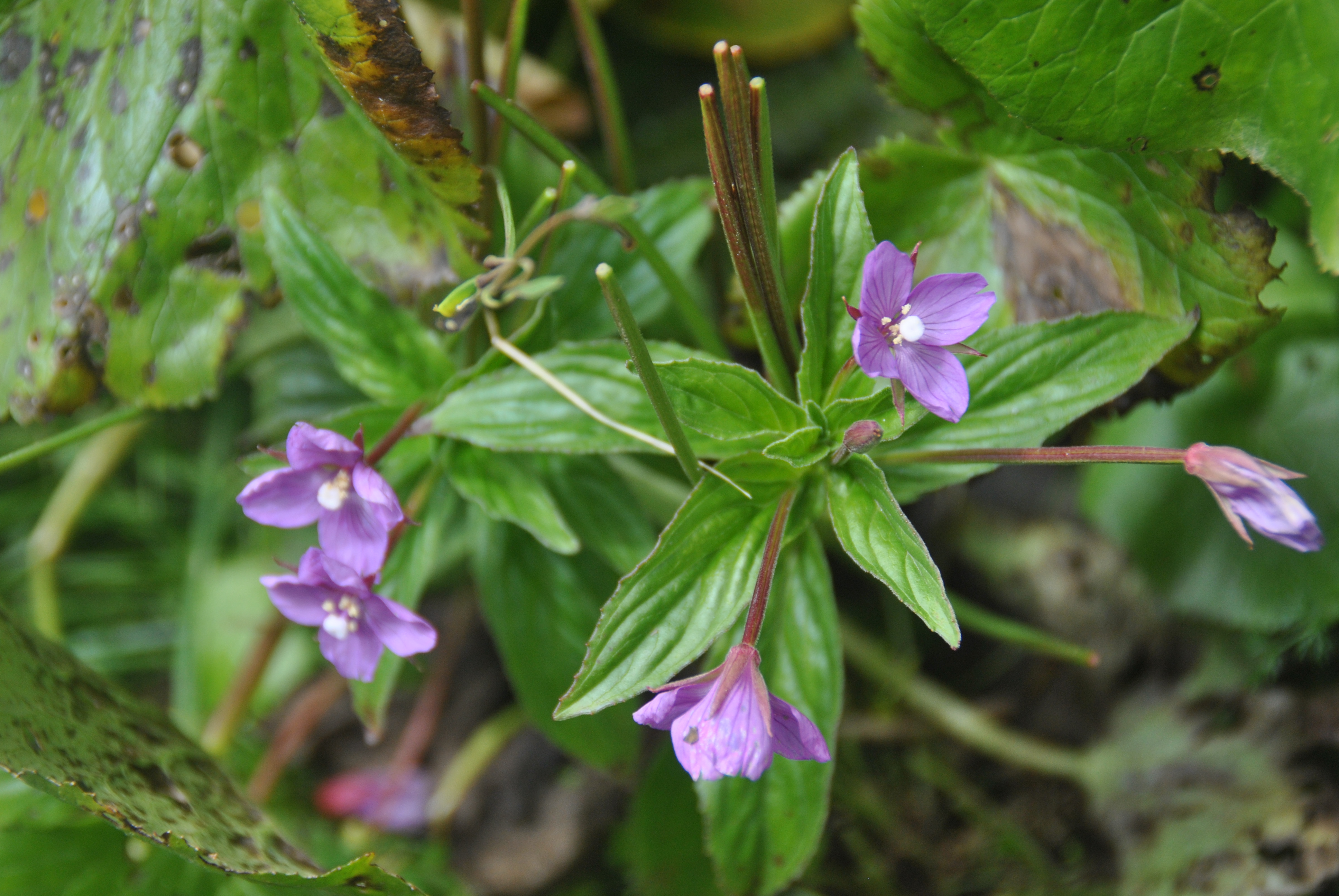Rocky Mountain willowherb
(Epilobium laxum)

Description
Epilobium laxum, commonly known as the Rocky Mountain willowherb, is a herbaceous perennial plant that belongs to the family Onagraceae. It is native to western North America, including the United States and Canada, and can be found in a variety of habitats, from moist meadows to rocky slopes, at elevations ranging from sea level to over 3000 meters. Physical Appearance Epilobium laxum, or the Rocky Mountain willowherb, is a herbaceous perennial plant that typically grows between 20 and 80 centimeters in height. It has an erect stem that is often reddish in color, and lance-shaped or elliptical leaves that are arranged alternately along the stem. The leaves are typically between 3 and 10 centimeters long, with toothed margins. The flowers of Epilobium laxum are pink to purple in color, and are arranged in racemes at the top of the stem. Each flower has four petals, four sepals, and eight stamens. The fruit is a cylindrical capsule that splits open to release numerous small seeds, each with a tuft of silky hairs that aid in wind dispersal. Overall, Epilobium laxum has an attractive appearance, with its pink to purple flowers and lance-shaped leaves making it a popular choice for gardens and landscaping. Distribution and Habitat Rocky Mountain willowherb is native to western North America. Its distribution range includes Alaska, Canada, and the United States, where it can be found from sea level to over 3000 meters elevation. This plant is commonly found in a variety of habitats, such as moist meadows, along streambanks, and rocky slopes. It prefers to grow in areas with moist soil and partial shade, but can tolerate a range of growing conditions. The species has a relatively wide distribution and is not currently considered threatened. However, like many plants, it may be impacted by habitat loss and fragmentation, as well as invasive species. As such, efforts to protect and conserve the plant's natural habitat are important to ensure its continued survival. Ecology Epilobium laxum plays an important ecological role in the areas where it is found. One of its most important roles is as a source of nectar for pollinators. The plant produces attractive pink to purple flowers that are rich in nectar, making it a valuable food source for a variety of pollinators such as bees, butterflies, and hummingbirds. Epilobium laxum also contributes to the spread of its own seeds through wind dispersal. The small seeds of the plant have a tuft of silky hairs that aid in wind dispersal, allowing them to travel long distances before germinating in a new location. Furthermore, the plant's roots and leaves help to stabilize soil, reducing erosion and increasing water retention in the areas where it grows. Overall, Epilobium laxum is an important component of the ecosystem in which it is found, providing food and habitat for pollinators, contributing to soil stability, and aiding in seed dispersal. Uses Rocky Mountain willowherb has a number of traditional uses. One of its most common uses is as a medicinal plant. The leaves and flowers of the plant have been used to treat a variety of ailments, including diarrhea, dysentery, and inflammation. The plant is also said to have astringent and diuretic properties. However, it is important to note that the medicinal use of this plant should be done under the guidance of a trained healthcare professional. In addition to its medicinal uses, Epilobium laxum is also cultivated as an ornamental plant. Its attractive pink to purple flowers and lance-shaped leaves make it a popular choice for gardens and landscaping. Overall, Epilobium laxum has both traditional medicinal and ornamental uses, contributing to its importance to human society. Conservation Epilobium laxum is not currently considered to be a threatened species. However, as with many plant species, it may be impacted by habitat loss and fragmentation, as well as invasive species. The conservation status of Epilobium laxum is not evaluated by the International Union for Conservation of Nature (IUCN) due to insufficient data. However, it is important to note that the loss or degradation of its habitat can affect the plant's survival and the ecosystem services it provides, such as pollination and soil stability. Efforts to protect and conserve the plant's natural habitat, as well as raising awareness of its ecological and medicinal importance, can help ensure its continued survival. Conclusion Epilobium laxum, or the Rocky Mountain willowherb, is a herbaceous perennial plant native to western North America. It plays an important role in the ecology of the areas where it is found, serving as a valuable source of nectar for pollinators and aiding in wind dispersal of its seeds. The plant also has traditional medicinal uses and is cultivated as an ornamental plant. Efforts to protect and conserve the plant's natural habitat are important to ensure its continued survival.
Taxonomic tree:







